Season Winter Collection, 2014.
Image courtesy of: Ceramic City WordPress
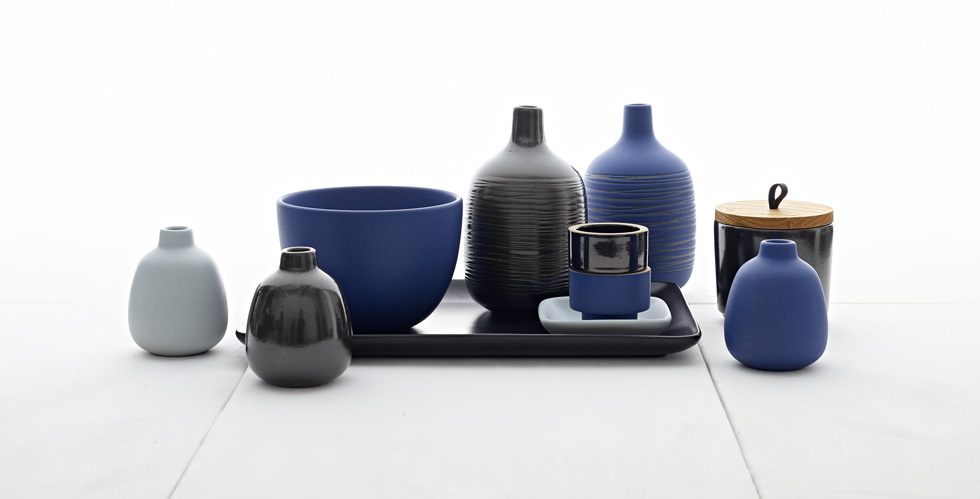
Season Winter Collection, 2014.
Image courtesy of: Ceramic City WordPress
It’s no surprise that we love Heath Ceramics. We love everything about this storied company and it’s beautiful products… but most of all, we love Heath’s unique glazes. Glazing is a very complicated and intricate process and not always predictable. At Heath, they love natural oxides, small batches and hand glazing. There’s a multi-step process to the way they fire on the kiln. Nothing is mass-produced or made in a high-volume… thus, pieces are closer to art than to houseware items.
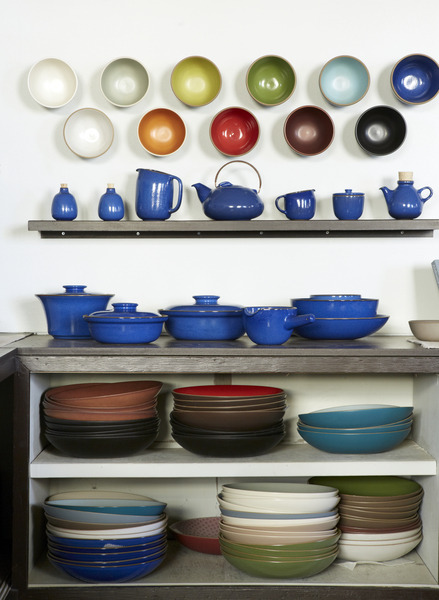
Like it’s products, the Heath Ceramics store is modern and minimal with wooden shelves, concrete floors, and lots of empty space!
Image courtesy of: Heath Ceramics
Heath’s glazes have been produced according to the same proprietary recipes that Edith Heath invented in 1948. There is a constant balancing of complex formulations, there are adjustments with regards to what works with what, and there are different ways to fire the ceramics, dependent on the material.
Glaze is the clay’s glassy surface that gives it the final color and finish. Surfaces can be matte, shiny, or satiny… glazes can also be layered for a more sophisticated look. Glaze is made up of a variety of minerals and metals which affect color, finish and opacity. Glaze is the end-product of a chemical interaction between ingredients during the firing process; each reaction goes through a molecular alteration under 2,000 degree Fahrenheit heat.
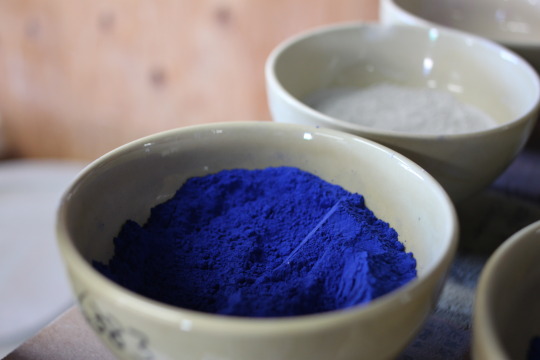
When Edith Heath was 33, she was teaching at San Francisco’s Presidio Hill School and offering ceramics courses in the evening at the California Labor School. Heath soon met Jermaine MacAgy, acting director of the Legion of Honor Museum. Impressed by her work, MacAgy invited Heath to show her ceramics. The exhibition featured 200 pieces, among which: tea service sets, bowls and salad sets.
Image courtesy of: Heath Ceramics
For a glaze to work, the basic ingredients is a combination of silica, clay and flux. Silica is similar to sand and what provides the glossy finish. The clay used in glazes comes from kaolin; in other words, a type of porcelain clay. Flux lowers the melting pot of a glaze, enabling the flowing effect or what we envision as the movement on the ceramic’s glaze.
The proportion of these materials varies according to desired end result. It’s such an involved process! Heath has “glaze-making teams” which test all the ingredients for purity and consistency. Because the materials used at Heath are less refined and not standardized; they have an unpredictability which results in the color variation they’re known for, a quality that they wouldn’t ever change. In essence, this is what makes Heath… Heath!
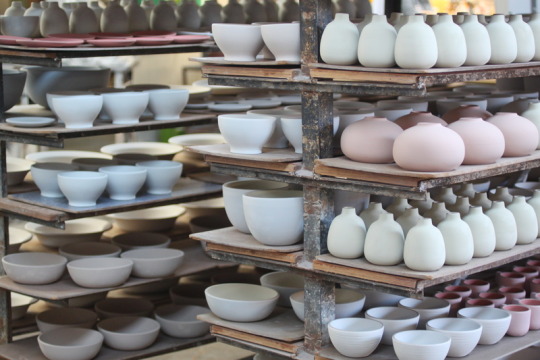
There’s no Heath Ceramics without glaze. This is why the design teams work closely with the glaze masters who work closely with the engineering and production teams. The statement of “It takes a village” rings true here!
Image courtesy of: Heath Ceramics
Each piece is glazed individually, either by spraying or hand-dipping. The glaze is wiped off both the bottom and lip of the ceramic to show the clay underneath. This is an element that Edith used 70 years ago when she started the company. Edith believed it was important to show the beauty and authenticity of the unglazed clay… we couldn’t agree more!
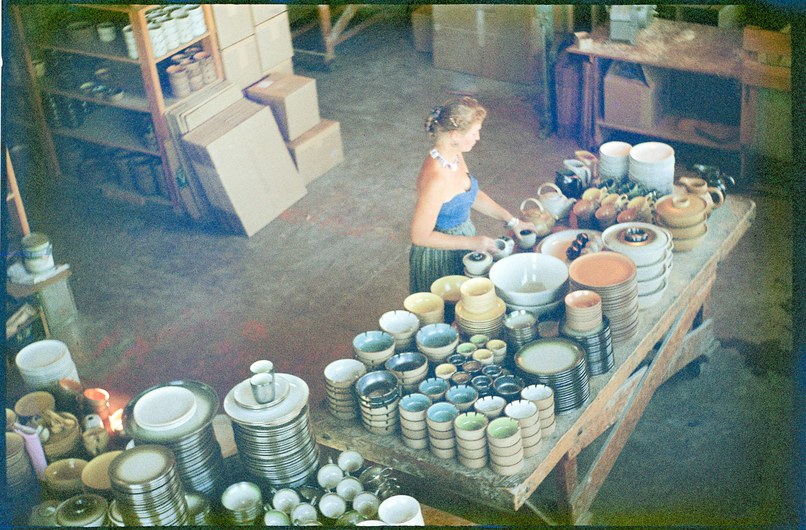
Edith Heath at her Sausalito factory.
Image courtesy of: Architectural Digest
Each Heath piece is made at the Sausalito factory. The factory is small and thus, colors get retired occasionally in order to allow new colors to “come in”. Originally, there were many light-based colors. Using some of these soon-to-be achieved colors, white clay was used to create “updated” colors. Its been 15 years since Heath’s palette has been refreshed… still gorgeous, it’s probably time for a new feel.